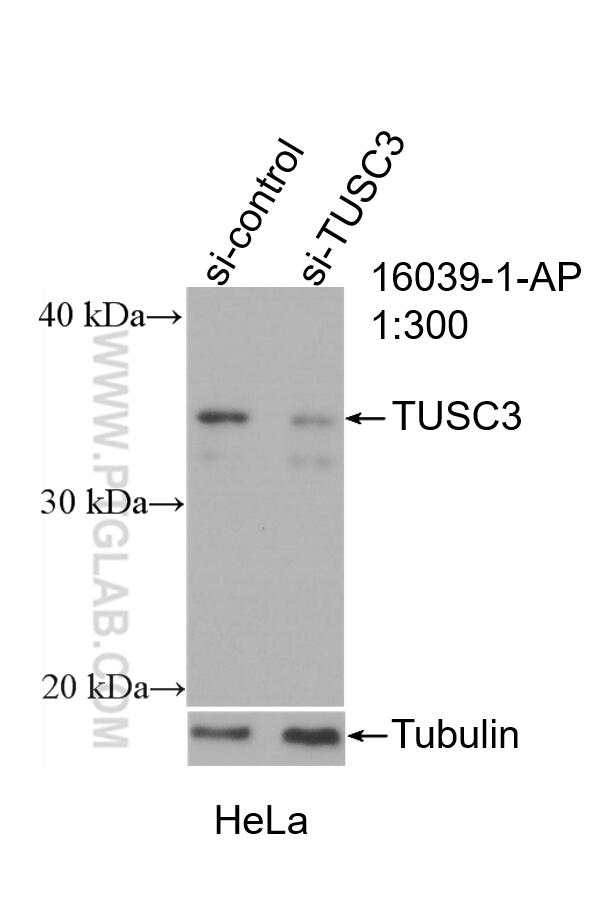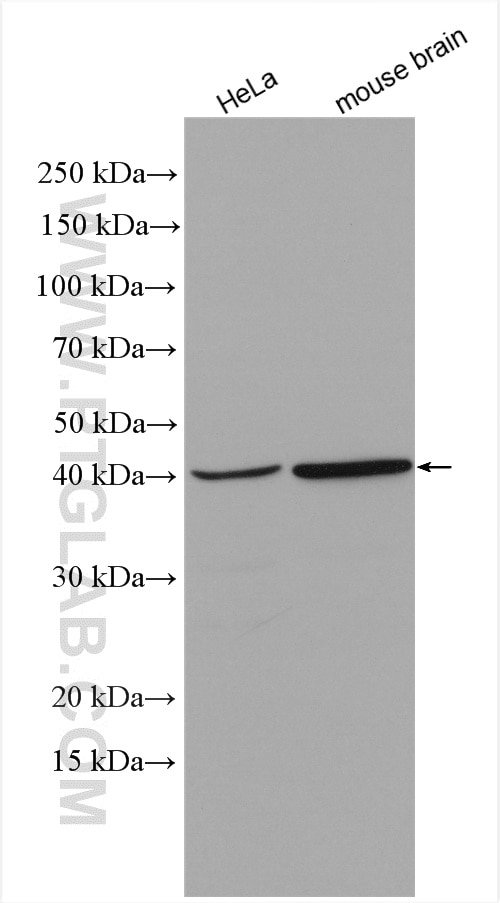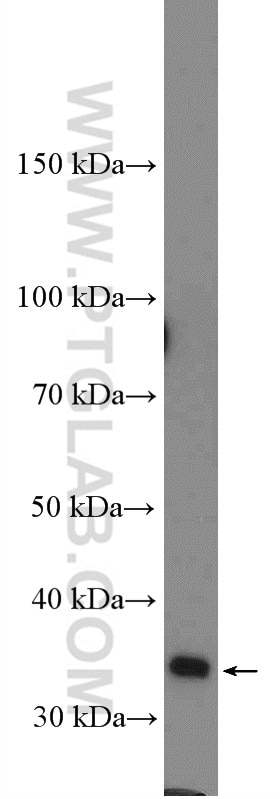- Phare
- Validé par KD/KO
Anticorps Polyclonal de lapin anti-TUSC3
TUSC3 Polyclonal Antibody for WB, ELISA
Hôte / Isotype
Lapin / IgG
Réactivité testée
Humain, rat, souris
Applications
WB, IHC, ELISA
Conjugaison
Non conjugué
N° de cat : 16039-1-AP
Synonymes
Galerie de données de validation
Applications testées
| Résultats positifs en WB | cellules HeLa, tissu cérébral de souris, tissu testiculaire de rat |
Dilution recommandée
| Application | Dilution |
|---|---|
| Western Blot (WB) | WB : 1:500-1:3000 |
| It is recommended that this reagent should be titrated in each testing system to obtain optimal results. | |
| Sample-dependent, check data in validation data gallery | |
Applications publiées
| KD/KO | See 3 publications below |
| WB | See 5 publications below |
| IHC | See 1 publications below |
Informations sur le produit
16039-1-AP cible TUSC3 dans les applications de WB, IHC, ELISA et montre une réactivité avec des échantillons Humain, rat, souris
| Réactivité | Humain, rat, souris |
| Réactivité citée | Humain |
| Hôte / Isotype | Lapin / IgG |
| Clonalité | Polyclonal |
| Type | Anticorps |
| Immunogène | TUSC3 Protéine recombinante Ag8912 |
| Nom complet | tumor suppressor candidate 3 |
| Masse moléculaire calculée | 347 aa, 40 kDa |
| Poids moléculaire observé | 35-40 kDa |
| Numéro d’acquisition GenBank | BC010370 |
| Symbole du gène | TUSC3 |
| Identification du gène (NCBI) | 7991 |
| Conjugaison | Non conjugué |
| Forme | Liquide |
| Méthode de purification | Purification par affinité contre l'antigène |
| Tampon de stockage | PBS avec azoture de sodium à 0,02 % et glycérol à 50 % pH 7,3 |
| Conditions de stockage | Stocker à -20°C. Stable pendant un an après l'expédition. L'aliquotage n'est pas nécessaire pour le stockage à -20oC Les 20ul contiennent 0,1% de BSA. |
Informations générales
TUSC3 (tumor suppressor candidate 3), originally named N33, is a potential tumor supressor gene. Decreased expression of TUSC3 has been found in various cancers, including prostate cancer, pancreas cancer and ovary cancer. TUSC3 also known as OST3A, is identified as a part of the oligosaccharyl-transferase (OST) complex and plays a crucial role in protein N-glycosylation. TUSC3 mutations have been found in families with non-syndromic autosomal recessive mental retardation.
Protocole
| Product Specific Protocols | |
|---|---|
| WB protocol for TUSC3 antibody 16039-1-AP | Download protocol |
| Standard Protocols | |
|---|---|
| Click here to view our Standard Protocols |
Publications
| Species | Application | Title |
|---|---|---|
Nat Commun miRNA-mediated TUSC3 deficiency enhances UPR and ERAD to promote metastatic potential of NSCLC. | ||
J Cell Biol Oxidoreductase activity is necessary for N-glycosylation of cysteine-proximal acceptor sites in glycoproteins.
| ||
Sci Rep Mammalian cells lacking either the cotranslational or posttranslocational oligosaccharyltransferase complex display substrate-dependent defects in asparagine linked glycosylation.
| ||
J Biol Chem ER entry pathway and glycosylation of GPI-anchored proteins are determined by N-terminal signal sequence and C-terminal GPI-attachment sequence | ||
J Transl Med Downregulation of TUSC3 promotes EMT and hepatocellular carcinoma progression through LIPC/AKT axis
| ||
J Allergy Clin Immunol Epigenetic activation of the TUSC3 gene as a potential therapy for XMEN disease |




